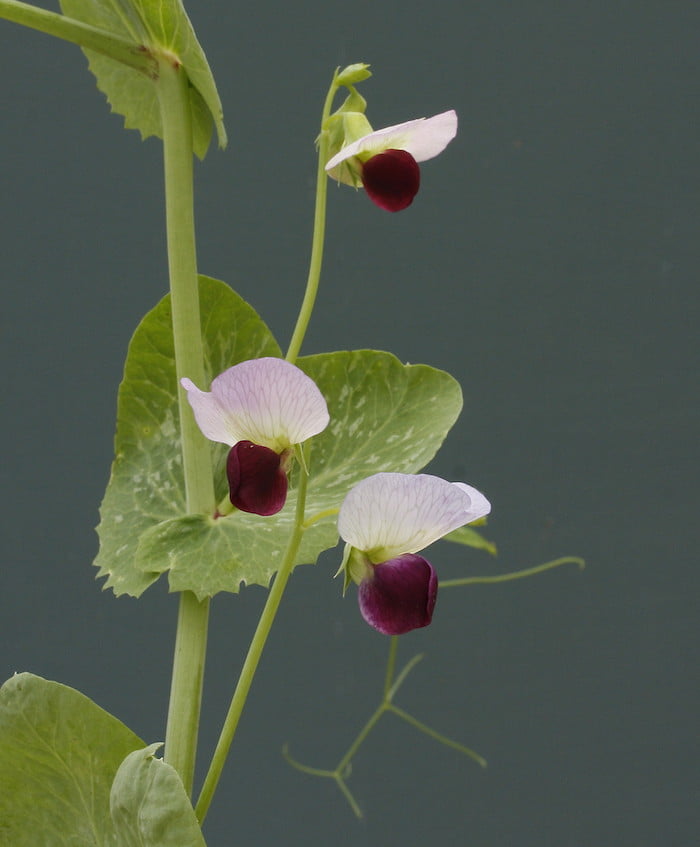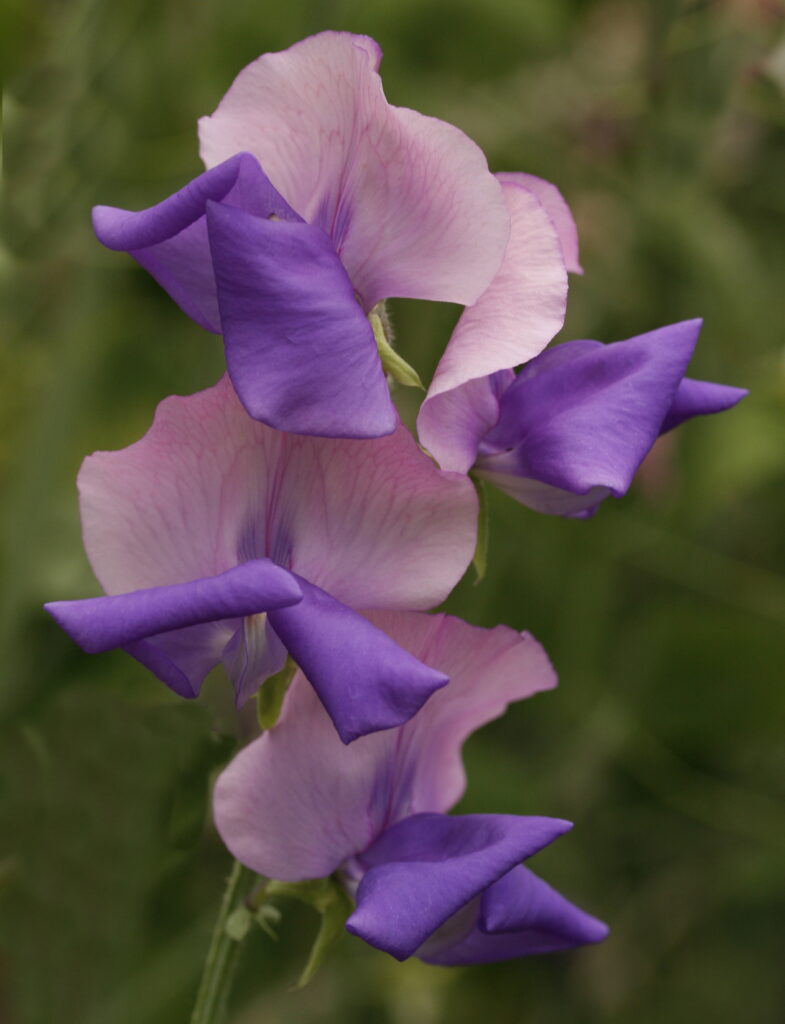Developing a new plant variety can take a long time. The packets of sweet peas I am going to plant in my garden represent a lifetime’s work for one plant breeder. Dr Keith Hammett has been breeding better sweet peas for more than 60 years – initially in England and for the past 50 years in his adopted home New Zealand.
“I started breeding sweet peas as a teenager and from the outset used ancestral cultivars, which were much more strongly scented than exhibition cultivars available at that time,” he explains. “As a consequence most of the stuff I have raised is considered to have good scent.”

Dr Keith Hammett
Indeed ‘High Scent’, one of his first named sweet pea varieties, is considered worldwide to be the benchmark cultivar for sweet pea scent.
As well as concentrating on fragrance his sweet pea flowers are large, frilled and distinctively coloured. Indeed the colour combinations in some of Hammett’s sweet peas turned tradition on its head.
To appreciate Dr Hammett’s achievements a little explanation of sweet pea floral morphology is necessary. Each sweet pea flower has five petals. One is large and upright and known as the ‘standard’. The other petals form the base of the flower and hold the male (stamens) and female (pistil) parts. These are the two ‘wings’ and ‘keel’, which is made up of two fused petals.
In two-toned or bicolour sweet peas the wings and keel are lighter in colour than the large standards. Using careful breeding from a flower where the typical colouration was reversed, Dr Hammett bred flowers with a light standard and darker wings and keel in pink, purple, orange and blue.

The reverse bicolour pea, Pisum elatius that inspired Dr Hammett’s breeding work with bicolour sweet peas. Image, Dr Keith Hammett
“Thirty odd years ago I saw a type of pea (Pisum elatius) where the standard petal is paler than the wing petals. As Pisum is related to sweet pea (Lathyrus), I wondered whether it might be possible to produce reverse bicolour sweet peas,” explains Dr Hammett. “As this characteristic did not exist in sweet peas, I worked incrementally towards that end.”
‘Maloy’ is one of his most successful reverse bicolour sweet peas and has been released in Australia by Mr Fothergill’s. The Hammett releases are ‘Harbinger’, ‘Pandemonium’ and ‘Erehwon’. ‘Harbinger’ is an early blooming cultivar with the maroon and violet colouring of the original wild sweet pea in a large frilly flowers. This is a traditional bicoloured sweet pea, where the standard petal is darker than the two wing petals.
‘Pandemonium’ is a ‘flaked’ sweet pea, which Dr Hammett explains means the dark cerise pigmentation occurs as splashes on a pale background colour. This cultivar won an award from the Royal Horticultural Society in Britain and flowers between spring and summer.

‘Erewhon’. Image Dr Keith Hammett.
‘Erewhon’ is a reverse bicolour on the blue side of the spectrum.
“I named it after the 19th century novel by Samuel Butler, which is often credited as being the first science fiction work,” he explains. “This work was stimulated by his visit to New Zealand where the seasons and everything else seemed to him to be reversed (Erewhon is virtually ‘nowhere’, backwards). It flowers in summer.”
But says Dr Hammett the most significant thing about ‘Erewhon’ is that unlike nearly all sweet peas that have existed since the plant was introduced to cultivation in 1699, it is a hybrid (a cross between two species).
Working with a colleague at the University of Auckland, Dr Hammett hybridised the garden sweet pea (Lathyrus odoratus) with the recently discovered Lathyrus belinensis from Turkey. The hybrids are named in hi honour as Lathyrus x hammettii (‘x’ in the name indicates it’s a hybrid between two species). He is not resting there. His new challenge is to breed a yellow sweet pea.

‘Pandemonium’. Image Dr Keith Hammett
To grow your own sweet peas, sow seeds in autumn, early winter or spring for flowers from winter to summer (depending on the variety). In warm climates sweet peas are usually sown in autumn or very early winter for winter blooms but in cold zones spring plantings can be more productive and see sweet peas in the garden flowering through summer.
The plants grow best in full sun in slightly alkaline soil enriched with well-rotted manure. Sweet peas climb to 1.8m high and need a tall, sturdy trellis to support their growth.
Seed crisis
The pretty packets of Dr Hammett’s sweet peas conceal a worldwide crisis in the sweet pea seed industry. Seeds are produced around the world but says sweet pea breeder Dr Hammett, experienced growers in both California and Tasmania are no longer producing sweet pea seeds. Sweet pea seeds are now mainly grown in China. Dr Hammett also grows and sells seeds for his own varieties via mail order from his website.
